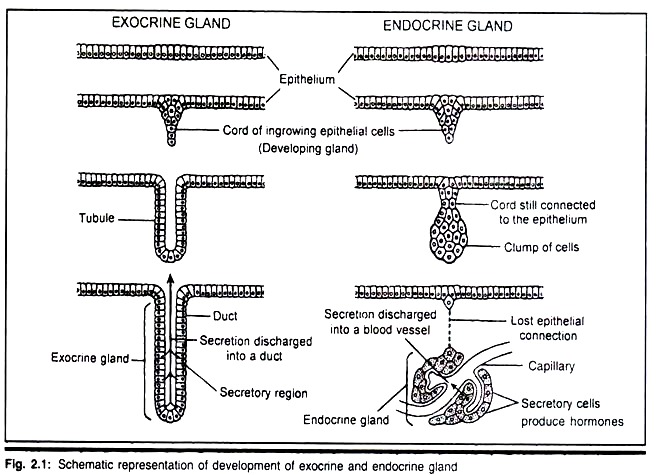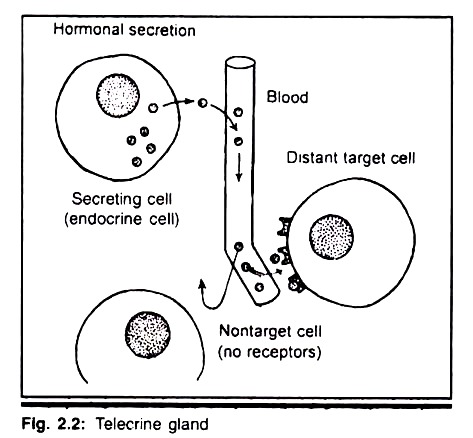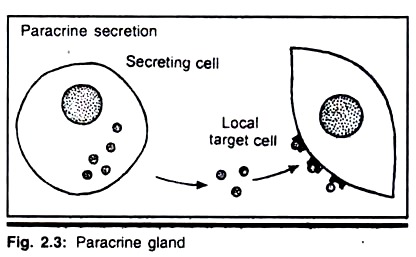Endocrine Gland: Definition, Development and Classification
Endocrine gland is defined as a ductless gland, whose special cells secrete hormone, secretion is directly poured into the blood and transported to target organ through circulation for initiation of physiological functions.
Development of Endocrine Gland:
Regarding embryonic origin, the endocrine glands differentiate from all germ layers. Those are derived from mesoderm (adrenal cortex, gonads) produce steroid hormones; those developing from ectoderm or endoderm secrete hormones like amine hormones or protein hormones.

In course of endocrine gland development, some of the cells of surface epithelium (site of origin) become modified into glandular nature. After maturation, glandular structure dissociates from the surface epithelium and remains as a separate organ with well vascularized condition. For instance, thyroid gland originates from pharyngeal wall in embryonic condition and remains as separate ductless gland. In case of exocrine gland the mature gland remains its connection with the surface epithelium by duct system (Fig. 2.1).
Classification of Endocrine Glands:
1. On the Basis of Location:
(a) Cranial endocrine glands: These endocrine glands are located in the head region. e.g., Pituitary gland, Pineal gland, Hypothalamus. (b) Pharyngeal endocrine glands: These glands are found in pharyngeal or neck region. e.g. Thyroid gland, Parathyroid gland. (c) Abdominal endocrine glands: These glands are located in the abdominal region. e.g. Pancreas, Adrenal, Testis, Ovary.
2. On the Basis of Number:
(a) Unilateral endocrine glands: These endocrine glands are single in number. e.g. Pituitary, Pineal gland, Pancreas. (b) Bilateral endocrine glands:
3. On the Basis of Secretion:
(a) Telecrine glands: Hormones are released by specialised endocrine cells into the extracellular space and are thence carried by blood to the distant target cells (Fig. 2.2).
e.g. Thyroid gland, Adrenal gland, Pituitary gland etc.  (b) Paracrine glands: Hormones diffuse locally through the interstitial fluid from the secretory cells to the adjacent target cells (Fig. 2.3).
(b) Paracrine glands: Hormones diffuse locally through the interstitial fluid from the secretory cells to the adjacent target cells (Fig. 2.3).  e.g. In islets of Langerhans, somatostatin is secreted from δ-cells, that reacts on adjacent α and β cells.
e.g. In islets of Langerhans, somatostatin is secreted from δ-cells, that reacts on adjacent α and β cells.